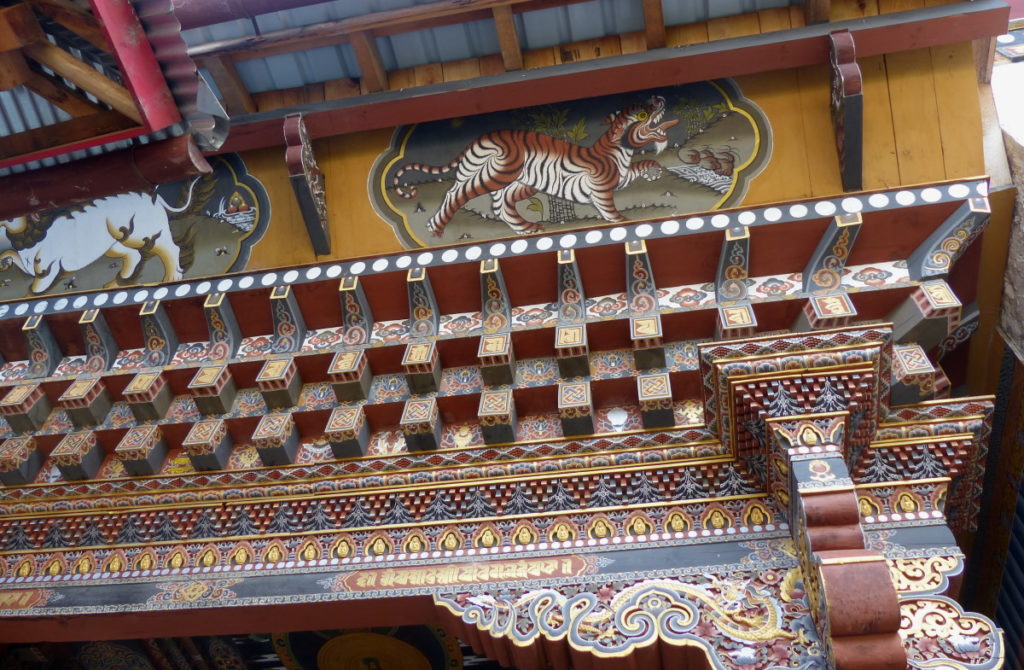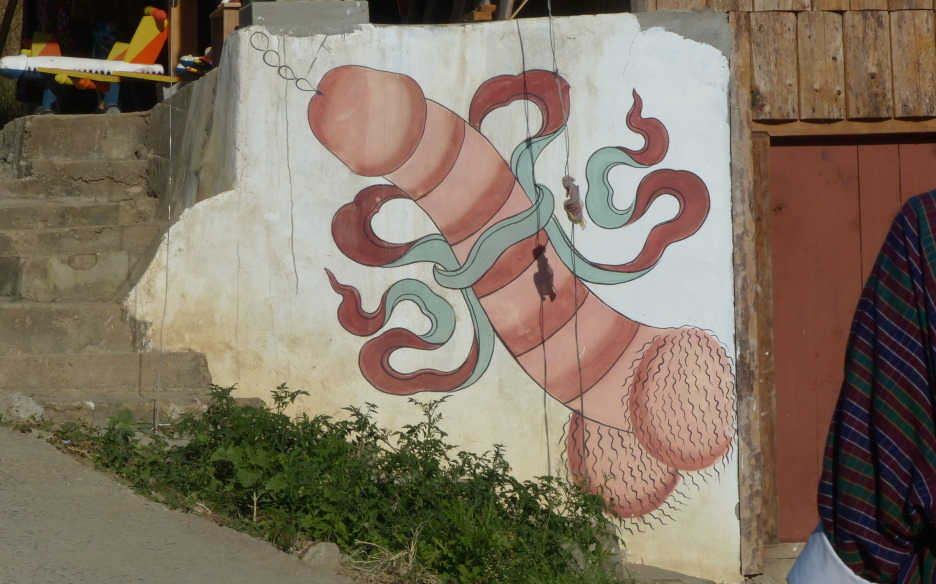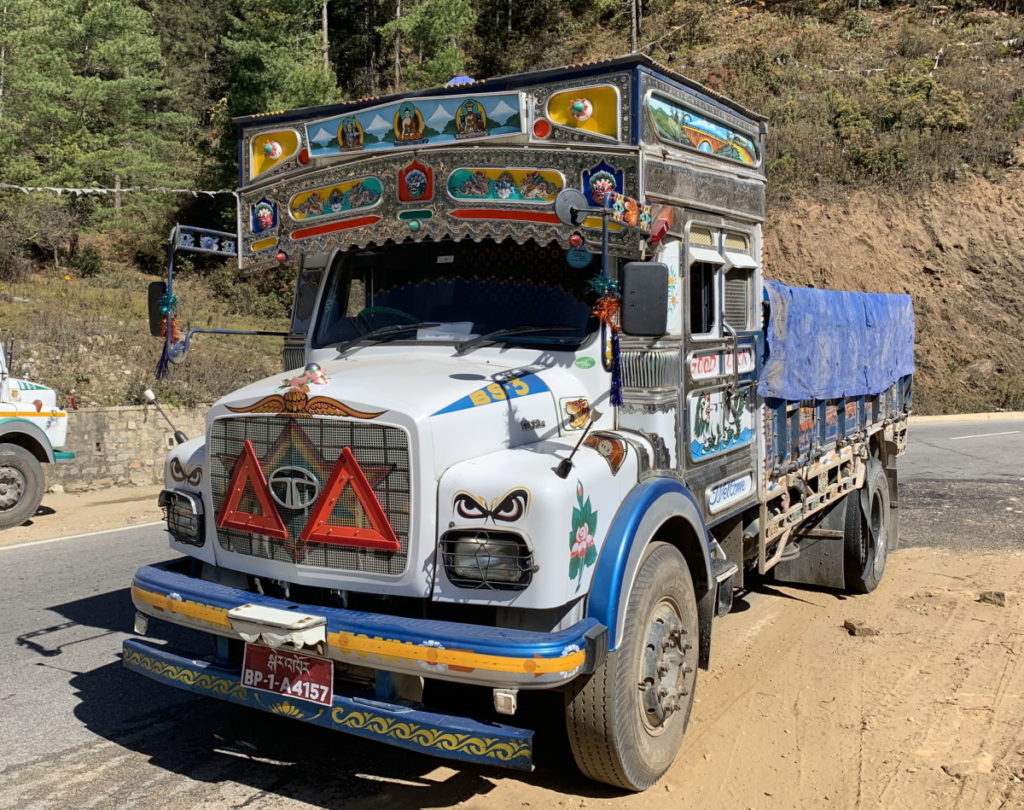
Bhutan is a country of visual feasts. Stunning mountainous landscapes. Festivals with beautiful dances and colorful costumes. And intricate architectural details and art.
Bhutan’s population is primarily Buddhist, and much of the art is religious. What appeared on our first day to be scary monster paintings, we understood to often be the benevolent version of a god, protecting the people. While there are certainly statues of Siddhartha Gautama as Buddha, much of the art depicts historic figures such as Guru Rinpoche and Pema Lingpa. A single painting will have tremendous detail and imagery. And often entire rooms were covered, to the inch, in art.

The only sad aspect of our visit is that no photography is permitted inside the temples and fortresses (lhakangs and dzongs.) There were a few visits where we stood, mouths agape, just trying to take in all the details of the carvings, sculpture and painntings in a vast room. Where do you start? Look in any direction, and there’s so much to see. We could have circled the room a dozen times and found new elements in each pass.
The Bhutanese government is trying to protect the country’s culture. Building codes promote historic architecture, including stone and rammed earth, no nails, and painted wooden details. Workers in government buildings must wear traditional woven clothing (this includes the tourist guides, who are licensed.) Visiting the Land of the Thunder Dragon feels like no where else on earth.

Traditional architecture is evident in the dzongs we visited–even the ones that have been rebuilt due to fire destruction. Every window and doorway has carved and painted wood. Roofs are adorned with sculpture. The airport in Paro is an uncrowded delight. Even the simple, rural guest house we stayed at in Gangtey had intricate cornices in our room.
Phallic imagery is another interesting aspect of Bhutanese art. Due to the teachings of Drukpa Kinley, AKA The Divine Madman, there will be phalluses painted on the sides of buildings. Of course, Phallus Village (the hamlet of Sopsokha) takes it a few steps further for the tourist crowd: you buy all kinds of genital souvenirs.

A visit to Bhutan is a optical wonderland and a workout for your camera.
